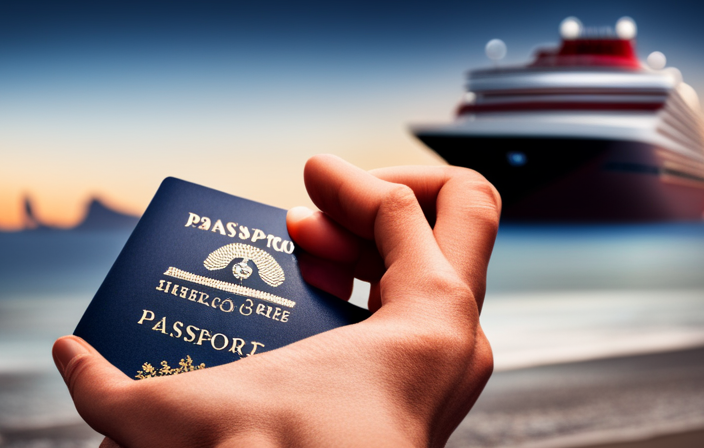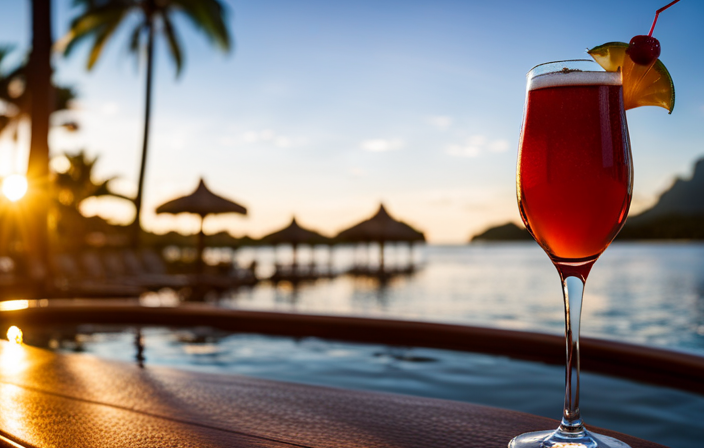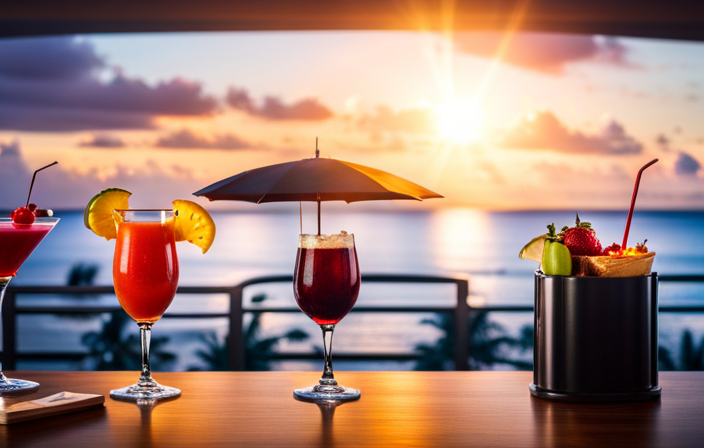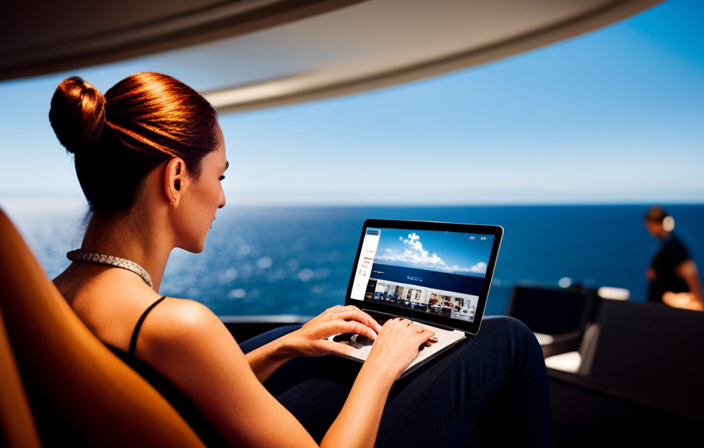Cruise News and Updates
Deluxe Eco-Hotels: Nomadic Luxury, Treehouse Retreats, Inclusive Expeditions, and Whale Listening
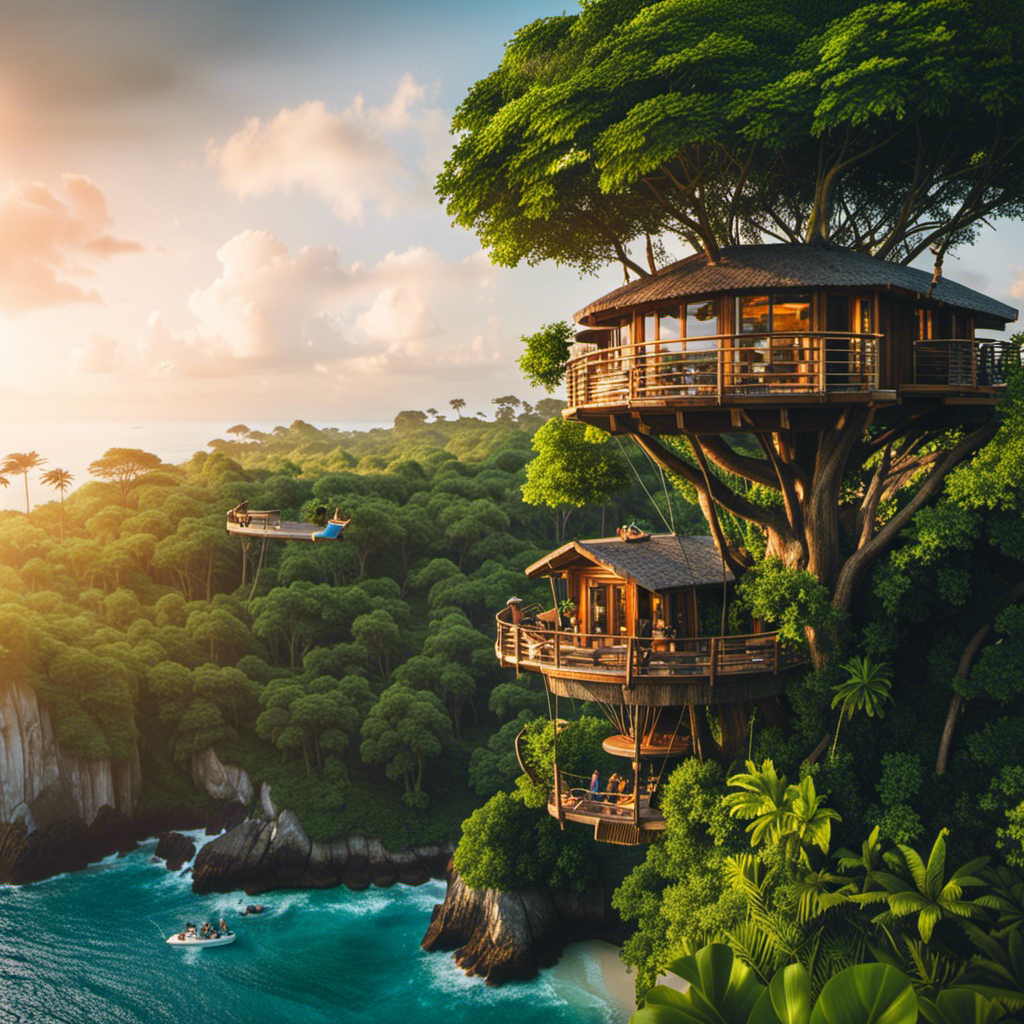
Venturing into the world of upscale eco-friendly hotels, I’m captivated by their unique and environmentally friendly offerings.
Take Moliving, for instance, a nomadic luxury hotel that seamlessly moves from one natural destination to another, leaving no trace behind.
Then there’s the Swedish Treehotel, nestled high in the Harads pines, where the new Biosphere double room combines accommodations for two humans with 350 bird families. This innovative design not only showcases the importance of bird nests in maintaining biodiversity but also highlights the need for eco-luxury innovations in the hospitality industry.
Join me as we embark on a journey through these remarkable eco-hotels, inclusive expeditions, and even the opportunity to listen to humpback whale songs aboard the Ocean Victory.
Key Takeaways
- Nomadic luxury eco-hotels like Moliving offer modular dwellings that can be easily transported to different natural destinations, providing sustainable travel options without compromising on luxury and comfort.
- Treehouse retreats, such as the Swedish Treehotel, combine luxury accommodations with environmental stewardship by highlighting the importance of bird nests and promoting coexistence with nature.
- Inclusive expeditions, like those offered by Hurtigruten Expeditions, prioritize diversity and inclusivity by forming advisory boards, providing specialized tours and training on cultural sensitivity, and advocating for increased representation of people of color in travel media and advertising.
- Sound science experiences, such as whale listening on the Ocean Victory by American Queen Voyages, raise awareness about the impact of noise pollution on marine life and encourage guests to become advocates for whale protection and conservation.
Moliving: Bringing Nomadic Luxury to Eco-Hotels
I’m excited to learn about Moliving, a nomadic luxury hotel that brings a unique and eco-friendly experience to the world of eco-hotels.
Moliving stands out by offering modular dwellings that can be easily transported to different natural destinations. This innovative approach allows guests to experience the beauty of various locations while minimizing their impact on the environment.
Sustainable travel is at the core of Moliving’s philosophy, as they strive to maintain the highest standards of service while leaving no trace behind. The modular dwellings are designed to be energy-efficient and utilize eco-friendly materials.
With Moliving, travelers can enjoy luxurious accommodations without compromising their commitment to sustainability. It’s a refreshing concept that combines luxury, comfort, and environmental consciousness in a truly remarkable way.
The Swedish Treehotel: A Unique Treehouse Retreat
Located high in the Harads pines, the Swedish Treehotel offers a unique experience with its new double room called the Biosphere. Designed by architect Bjarke Ingels and ornithologist Ulf Ohman, this treehouse retreat combines architectural design with a focus on bird conservation.
The Biosphere is not only a deluxe accommodation for two human guests but also provides nesting boxes for 350 bird families. The facade of the room is designed to allow birds to fly in and out, creating a harmonious coexistence between humans and nature.
With the decline in natural holes in trees due to forestry practices, bird nests have become an important measure for maintaining bird populations and enhancing biodiversity. The Swedish Treehotel’s Biosphere exemplifies the perfect balance between luxury and environmental stewardship, making it a truly remarkable destination for nature lovers and bird enthusiasts alike.
The Importance of Bird Nests for Biodiversity
Bird nests play a crucial role in maintaining biodiversity and providing breeding space for birds. As human activities, such as forestry, have reduced natural holes in trees for bird nests, conservation efforts and habitat restoration become increasingly important.
Bird nests provide a safe and secure environment for birds to lay their eggs, incubate them, and raise their young. By providing suitable breeding space, bird nests help maintain bird populations and enhance biodiversity.
Conservation efforts focus on preserving existing bird nests and creating artificial ones, such as nesting boxes, to compensate for the loss of natural nesting sites. Habitat restoration involves creating diverse habitats with suitable trees and vegetation to support a variety of bird species.
Protecting and promoting bird nests is essential for the long-term survival of birds and the overall health of ecosystems.
Expanding Inclusive Expeditions: The Role of BTAB
The formation of the Black Traveler Advisory Board (BTAB) aims to attract and include people of different races in the travel industry. This initiative has had a significant impact on inclusivity in the travel sector.
The BTAB consists of travel professionals from various industries who provide valuable input and insights. They aim to make travel experiences more inclusive for everyone.
Here are some of the ways the BTAB is making a difference:
- Collaborating with travel companies to create diverse and inclusive marketing campaigns.
- Working with travel agencies to develop specialized tours and itineraries that cater to a wider range of travelers.
- Providing training and education to travel industry professionals on cultural sensitivity and inclusivity.
- Advocating for increased representation of people of color in travel media and advertising.
- Promoting and supporting black-owned travel businesses and destinations.
Through these initiatives, the BTAB is actively working towards creating a more inclusive and diverse travel industry.
Sound Science: Whale Listening on Ocean Victory
I am fascinated by the partnership between American Queen Voyages and acoustic ecologist Dr. Michelle Fournet, allowing guests to listen to humpback whale songs on the research ship Ocean Victory. This collaboration provides a unique opportunity to get close to whales and understand their communication. It also sheds light on the importance of sound science in studying marine life.
Whale migration patterns are a crucial aspect of their survival and understanding them helps in their conservation. However, the impact of noise pollution on marine life, including whales, is a growing concern. Noise from ships, sonar systems, and other human activities can disrupt their communication, navigation, and feeding patterns. This partnership between American Queen Voyages and Dr. Michelle Fournet highlights the need to minimize noise pollution and create a harmonious environment for these magnificent creatures. Through this experience, guests not only learn about whales but also become advocates for their protection.
| Whale Migration Patterns | Impact of Noise Pollution on Marine Life |
|---|---|
| Understanding migration helps in conservation efforts | Noise pollution disrupts communication and feeding patterns |
| Important for the survival of whale populations | Creates a need for minimizing human-generated noise |
| Provides insights into their behavior and habitats | Highlights the importance of creating a harmonious environment |
Enhancing Eco-Hotel Experiences: Eco-Luxury Innovations
One of the most exciting eco-luxury innovations in the hospitality industry is the concept of modular dwellings that can be moved around to deliver unique and sustainable experiences. These innovative structures, such as Moliving, offer a new way of embracing eco-friendly architecture and sustainable hospitality practices.
Here are two key benefits of these modular dwellings:
-
Flexibility and Adaptability:
- The modular design allows for easy assembly and disassembly, making it possible to move the dwellings to different locations.
- This flexibility enables hotels to offer guests a variety of natural destinations, providing them with diverse and immersive experiences.
-
Minimal Environmental Impact:
- Modular dwellings are designed with sustainability in mind, using eco-friendly materials and energy-efficient technologies.
- By leaving no trace behind and implementing sustainable practices, these dwellings minimize their carbon footprint and contribute to the preservation of the environment.
Overall, these modular eco-luxury dwellings are revolutionizing the hospitality industry by providing guests with exceptional experiences while prioritizing sustainability and eco-friendly practices.
Exploring the Wonders of Nature: Eco-Hotel Adventures
Exploring nature’s wonders during eco-hotel adventures provides an opportunity to connect with the environment and gain a deeper appreciation for the natural world. These eco-hotels are not just luxurious retreats, but also actively contribute to nature conservation and sustainable travel. They strive to leave no trace behind and maintain the highest standards of service.
One example is Moliving, a nomadic luxury hotel that moves around to deliver experiences in natural destinations while minimizing its impact on the environment. Another example is the Swedish Treehotel, located high in the Harads pines, which features a new double room called the Biosphere designed to accommodate both human guests and bird families. By providing nesting boxes for birds, the hotel helps maintain bird populations and enhances biodiversity.
These eco-hotels are part of a growing trend towards more inclusive expeditions, such as those offered by Hurtigruten Expeditions. They have formed the Black Traveler Advisory Board (BTAB) to attract and include people of different races, ensuring that everyone has the opportunity to experience the wonders of nature.
Additionally, some eco-hotels are embracing sound science to offer unique experiences, like American Queen Voyages partnering with acoustic ecologist Dr. Michelle Fournet. Guests can now listen to humpback whale songs and gain a deeper understanding of their communication.
These eco-hotel adventures not only provide luxurious accommodations, but also allow us to contribute to nature conservation and experience the beauty of the natural world in a sustainable way.
Frequently Asked Questions
What Is the Concept Behind Moliving’s Nomadic Luxury Hotels and How Do They Deliver Natural Destinations?
Moliving’s nomadic luxury hotels offer eco-friendly accommodations. Their business model revolves around delivering natural destinations by moving around. With their modular dwellings, they maintain the highest standards of service while leaving no trace behind.
What Is the Biosphere and What Makes It Unique in the Swedish Treehotel?
The Biosphere in the Swedish Treehotel is a unique double room designed by architect Bjarke Ingels and ornithologist Ulf Ohman. Its sustainable architecture blends with the environment, offering a truly immersive and eco-friendly experience in treehouse exploration.
Why Have Natural Holes in Trees Reduced and Why Is It Important to Maintain Bird Nests for Biodiversity?
The decline in natural tree holes has reduced breeding space for birds, impacting biodiversity. Maintaining bird nests is crucial for the ecosystem as it provides a breeding space for birds and helps preserve bird populations.
Can You Provide More Information About the Black Traveler Advisory Board (Btab) and Their Role in Expanding Inclusive Expeditions?
The Black Traveler Advisory Board (BTAB) plays a crucial role in expanding inclusive expeditions. Comprised of industry professionals, they aim to attract and include people of different races. Their valuable input helps create more diverse and welcoming travel experiences.
How Does the Collaboration Between American Queen Voyages and Acoustic Ecologist Dr. Michelle Fournet Allow Guests to Listen to Humpback Whale Songs and Understand Their Communication on the Ocean Victory Ship?
The collaboration between American Queen Voyages and Dr. Michelle Fournet allows guests to listen to humpback whale songs and understand their communication on the Ocean Victory ship. This collaboration benefits both research and guest experience.
Conclusion
In conclusion, the world of deluxe eco-hotels is truly a paradoxical wonder. While they offer luxurious accommodations and unique experiences, they also strive to minimize their environmental impact and promote sustainable practices.
From the nomadic luxury of Moliving to the bird-filled Biosphere at the Swedish Treehotel, these eco-hotels redefine the concept of luxury.
The inclusive expeditions and whale listening experiences further demonstrate their commitment to diversity and scientific exploration.
So, next time you’re looking for a truly extraordinary getaway, consider these eco-luxury innovations and immerse yourself in the wonders of nature.
Meet Asra, a talented and adventurous writer who infuses her passion for exploration into every word she writes. Asra’s love for storytelling and her insatiable curiosity about the world make her an invaluable asset to the Voyager Info team.
From a young age, Asra was drawn to the power of words and their ability to transport readers to far-off lands and magical realms. Her fascination with travel and cultures from around the globe fueled her desire to become a travel writer, and she set out on a journey to turn her dreams into reality.
Cruise News and Updates
Safely Experience And Support The Future Of Cruises In 2021
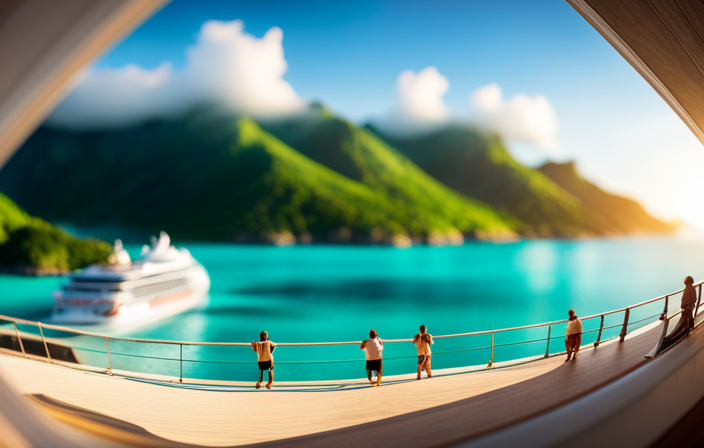
Howdy! While we make our way through the unpredictable challenges brought on by the global health crisis, the cruise industry is undoubtedly one of the hardest hit sectors. However, do not despair, fellow journey-seekers, as it appears that there is a glimmer of hope on the horizon!
In this article, we will delve into the exciting world of cruises in 2021 and explore how we can safely experience and support their future.
Like a sturdy anchor, the Centers for Disease Control and Prevention (CDC) has laid out requirements for test cruise volunteers, ensuring that we set sail with utmost caution. These requirements include being 18 years or older, fully vaccinated against COVID-19 or having no high-risk medical conditions, and agreeing to COVID-19 testing. These test cruises serve as a simulation, allowing cruise lines to fine-tune their operations and ensure the safety of both crew and passengers.
So, grab your life jackets and join me as we embark on a journey to discover the ins and outs of these test cruises. From embarkation to dining, entertainment to medical evacuation procedures, we will explore it all.
Let’s set sail and support the future of cruises in 2021!
Key Takeaways
- CDC requirements for test cruise volunteers include being 18 years or older, fully vaccinated against COVID-19 or having no high-risk medical conditions, and undergoing COVID-19 symptom evaluations before embarkation and disembarkation.
- The purpose of test cruises is to ensure safe operation during the global health crisis and simulate the passenger experience.
- Test cruises must be at least 2-7 days in duration with at least one overnight stay, and the CDC recommends a minimum voyage length of 3 days with 2 overnight stays.
- Simulated activities on test cruises include embarkation and disembarkation procedures, dining, entertainment, and medical evacuation procedures, isolation and quarantine measures, and protocols for recreational activities and shore excursions.
What is it?
I’ll explain what a test cruise is in 2021. A test cruise is a simulated voyage that cruise lines conduct to ensure safe operation despite the global health crisis. These cruises serve to test and evaluate the implementation of safety measures and protocols.
The purpose is to simulate the passenger experience and identify any areas that may need improvement. Test cruises typically last between 2-7 days, with at least one overnight stay. Safety is of utmost importance, and all volunteers must adhere to CDC requirements, such as being fully vaccinated against COVID-19 and undergoing pre and post-disembarkation COVID-19 testing.
While test cruises are not paid and cannot be part of employment conditions, volunteers have the opportunity to support the future of the cruise industry and contribute to the development of enhanced safety protocols.
Requirements for Volunteers
To volunteer for a test cruise in 2021, I must meet the CDC requirements, including being fully vaccinated against COVID-19 or having no high-risk medical conditions, and I must be willing to undergo COVID-19 testing before and after the cruise.
The evaluation process for volunteers will involve assessing their vaccination status and checking for any COVID-19 symptoms before embarkation and disembarkation.
The purpose of this evaluation is to ensure the safety of all participants and to simulate a real passenger experience. It is crucial for volunteers to comply with these requirements in order to support the future of cruises in 2021 and to help the industry operate safely amidst the global health crisis.
By following these guidelines, we can contribute to the development of effective protocols and measures that will allow cruise ships to resume operations in a responsible manner.
Test Cruise Details
The test cruises will have a duration of 2-7 days and will include at least one overnight stay. These cruises are designed to simulate the passenger experience and ensure safe operation despite the ongoing global health crisis. During the test cruises, various activities will be simulated, including embarkation and disembarkation procedures, dining, entertainment, and medical evacuation protocols.
Additionally, there will be simulated recreational activities such as casinos and spa services, as well as protocols for private-island and port of call shore excursions.
As for the sign-up process and selection for test cruises, currently, only Royal Caribbean has provided a sign-up form for volunteers. In the first week, they received 100,000 signatures. However, there haven’t been any announcements or updates regarding sign-up methods from Norwegian, Carnival, MSC, and Disney. The volunteer selection process for test cruises hasn’t been disclosed at this time.
Frequently Asked Questions
Can I bring my own food and beverages on a test cruise?
On a test cruise, passengers are not allowed to bring their own food and beverages. The cruise line provides all meals and drinks as part of the simulated passenger experience. Dietary restrictions can be accommodated upon request.
Will test cruise volunteers have access to all onboard amenities and services?
Test cruise volunteers are expected to have access to all onboard amenities and services. However, it is important to note that volunteers are not compensated for their participation in the test cruises.
Are there any restrictions on the number of passengers allowed on a test cruise?
Passenger capacity limits for test cruises are determined by the CDC. However, cruise lines that require vaccinations for passengers can bypass test cruises. Vaccination requirements are in place to ensure the safety of all participants.
How often will test cruises be conducted in 2021?
Test cruises will be conducted multiple times in 2021 as part of the cruise industry recovery and to ensure health and safety measures. The exact frequency of test cruises has not been specified.
Will test cruise volunteers be compensated in any way for their participation?
Test cruise volunteers will not be compensated for their participation. However, they will benefit from the opportunity to experience a simulated cruise, contribute to the safe operation of cruises, and help shape the future of the industry.
Claire, a creative soul with an unquenchable thirst for storytelling, is an integral part of the Voyager Info team. As a dedicated writer, she weaves captivating narratives that transport readers to enchanting cruise destinations and beyond.
Claire’s love affair with writing began at an early age when she discovered the magic of words and their ability to craft worlds and emotions. Her innate curiosity led her to explore various literary genres, but it was travel writing that truly captured her heart. Drawing inspiration from her own globetrotting adventures and encounters with diverse cultures, Claire embarked on a journey to become a travel writer par excellence.
Cruise News and Updates
How Cruise Ships Operate: Profits, Strategies, And Continuous Operation
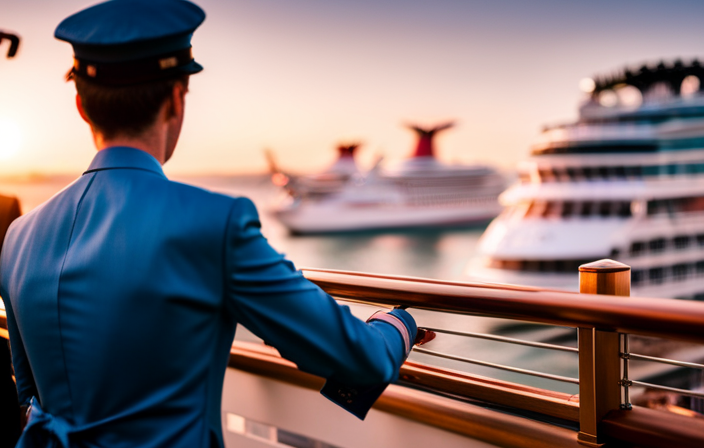
Hello! We are excited to invite you to explore the captivating world of cruise ships and learn about how they operate.
Picture this: cruise ships, those floating paradises on the sea, are not only about providing unforgettable vacations but also about generating impressive profits. In this article, we’ll explore the strategies and continuous operation that keep these magnificent vessels afloat financially.
Did you know that ticket prices for mainstream cruise lines average around $1,293? But that’s just the beginning. Additional onboard spending can add up to a whopping $429 per passenger. From casinos to spas, shopping to dining, and everything in between, cruise lines have cleverly designed their ships to maximize revenue from various sources.
But it doesn’t stop there. We’ll also uncover the secrets behind the ownership and categorization of cruise lines. From Carnival Corporation to Royal Caribbean Group and Norwegian Cruise Line Holdings, these three corporations dominate the industry with their multiple brands.
So, fasten your seatbelts (or life jackets) and get ready to embark on a journey through the intriguing world of cruise ship operations.
Let’s set sail!
Key Takeaways
- Cruise ship ticket prices include both the base fare and additional onboard spending, such as casinos, spas, shopping, dining, Wi-Fi, and drinks.
- Main sources of profit for cruise lines are casinos, spas, shopping, dining, Wi-Fi, and drinks.
- Placement of common areas like lounges, bars, and casinos strategically along passenger routes helps generate more revenue.
- Cruise lines employ various profit-making strategies, such as making most of the money upfront for premium cruise lines and catering to passengers who spend more time in ports for luxury cruise lines.
How They Make Money
I make money by offering various sources of entertainment and amenities on board, such as casinos, spas, shopping, dining, Wi-Fi, and drinks. These are the key sources of profit for cruise lines. Onboard revenue sources are crucial in generating income for the company.
Passengers spend money on these amenities and entertainment options, contributing to the overall profitability of the cruise line. Additionally, we generate revenue through passenger spending on private islands. By leasing private islands from foreign countries, we provide passengers with unique experiences, such as complimentary beach chairs and BBQ lunches. This not only enhances their vacation but also increases their spending on the island.
These onboard revenue sources and passenger spending on private islands play a significant role in ensuring the financial success of the cruise line.
Continuous Operation Process
Year-round, cruise liners tirelessly navigate the seas, seamlessly switching regions during repositioning cruises, and swiftly preparing for the next voyage on turnaround day. Crew management plays a crucial role in ensuring continuous operation. Cruise lines hire crew members from foreign countries, allowing them to save costs while maintaining a diverse and efficient workforce. These crew members work tirelessly to provide exceptional service to passengers, ensuring their comfort and satisfaction throughout the voyage.
Repositioning cruises are another aspect of continuous operation. These cruises occur when ships move from one region to another, often during seasonal changes. During repositioning cruises, cruise lines take the opportunity to offer unique itineraries and experiences to passengers. This allows them to generate additional income while optimizing the usage of their fleet.
Incorporating a 3 column and 5 row table:
| Continuous Operation Process | |
|---|---|
| Year-round operation | Without breaks |
| Repositioning cruises | Ships switch regions |
| Turnaround day | Quick disembarkation and preparation for the next cruise |
| Crew management | Hiring crew members from foreign countries |
| Additional income | Visiting multiple ports |
Ownership and Categorization
Carnival Corporation, Royal Caribbean Group, and Norwegian Cruise Line Holdings are the three corporations that own multiple cruise line brands. These corporations have a complex ownership structure, with each owning several cruise lines that cater to different market segments.
Carnival Corporation, for example, owns popular mainstream brands such as Carnival Cruise Line and Princess Cruises, while Royal Caribbean Group owns premium brands like Royal Caribbean International and Celebrity Cruises. Norwegian Cruise Line Holdings, on the other hand, owns Norwegian Cruise Line, which falls into the mainstream category.
Differentiation factors play a crucial role in the ownership structure. Each corporation strategically positions its cruise line brands to cater to different types of passengers. This allows them to capture a wider market share and maximize profits.
From mainstream to luxury, these corporations have created a diverse range of cruise lines that offer unique experiences and amenities. By offering different levels of service, accommodations, and onboard activities, they are able to attract and retain passengers with varying preferences and budgets.
The ownership and categorization of cruise line brands play a significant role in the overall profitability and success of these corporations.
Frequently Asked Questions
How do cruise ships handle medical emergencies and provide medical care to passengers on board?
Cruise ship medical facilities are equipped to handle medical emergencies. The crew receives emergency response training, and medical personnel are available on board. Passengers can receive medical care and treatments while at sea.
What safety measures are in place to prevent accidents or incidents on cruise ships?
Cruise ship safety measures include thorough training for crew members, regular safety drills, strict adherence to international safety regulations, advanced navigation systems, surveillance cameras, and emergency response protocols to prevent accidents and incidents onboard.
How do cruise ships handle waste management and environmental sustainability?
Ah, waste management and environmental sustainability, the unsung heroes of cruising. Cruise ships tackle these challenges through advanced waste treatment systems, recycling programs, and energy-efficient technologies, ensuring a greener voyage for all.
What is the process for hiring and training crew members on cruise ships?
The hiring process for crew members on cruise ships involves recruiting from foreign countries, conducting interviews and background checks, and providing training in various areas such as safety, customer service, and emergency procedures.
How do cruise ships handle security and ensure the safety of passengers and their belongings?
Cruise ship security is a top priority, ensuring passenger safety and protecting their belongings. Vigilant surveillance systems, trained security staff, and strict access control measures are implemented to prevent incidents and swiftly respond to emergencies.
Claire, a creative soul with an unquenchable thirst for storytelling, is an integral part of the Voyager Info team. As a dedicated writer, she weaves captivating narratives that transport readers to enchanting cruise destinations and beyond.
Claire’s love affair with writing began at an early age when she discovered the magic of words and their ability to craft worlds and emotions. Her innate curiosity led her to explore various literary genres, but it was travel writing that truly captured her heart. Drawing inspiration from her own globetrotting adventures and encounters with diverse cultures, Claire embarked on a journey to become a travel writer par excellence.
Cruise News and Updates
The Fascinating World Of Cruise Ships: Size, Power, And Environmental Impact
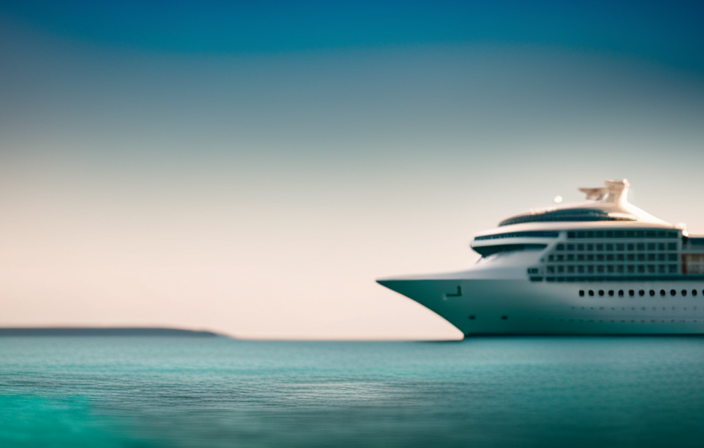
Oh, the world of cruise ships. It’s a mesmerizing realm, filled with magnificent vessels sailing the vast oceans, taking passengers to distant, enchanting locations.
The sheer size and power of these floating marvels never fail to astound me. From their towering lengths, ranging from 900 to 1,100 feet, to their impressive fuel tanks, holding a staggering 1 to 2 million gallons of fuel, cruise ships are a testament to human engineering. Some even harness the energy of liquefied natural gas, with engines so colossal they could fill a room. It’s truly awe-inspiring.
Yet, amidst this marvel, we must also consider the environmental impact. Many cruise lines still rely on diesel-powered engines, but the use of LNG reduces carbon emissions by a significant 30%.
As a passionate traveler and writer, I am eager to delve into the fascinating world of cruise ships, exploring their size, power, and environmental impact. Join me as we embark on this journey of discovery and exploration.
Key Takeaways
- Cruise ships are massive vessels that can range in length from 900 to 1,100 feet.
- Some cruise ships use liquefied natural gas (LNG) as fuel, reducing carbon emissions by 30%.
- The environmental impact of cruise ships, particularly diesel-powered engines, is a concern and contributes to air pollution and climate change.
- The adoption of sustainable cruise practices, including the use of LNG fuel, is crucial for a more sustainable future and to mitigate the environmental impact of cruise ships.
Cruise Ship Specifications
Cruise ship specifications are an important aspect to consider when understanding their size, power, and environmental impact. These massive vessels can range in length from 900 to 1,100 feet, accommodating thousands of passengers and crew members.
Fuel consumption is a significant consideration, with cruise ships typically carrying 1-2 million gallons of fuel in their tanks. Some ships are now incorporating LNG tanks, which reduce carbon emissions by 30%.
The shipbuilding process is a complex endeavor, with engines playing a crucial role in powering these floating cities. Cruise ships are equipped with 4-6 engines, each generating an impressive 18.5 megawatts of power. These engines, measuring up to 45 feet in length and 27 feet in height, propel the ship at an average speed of 18-22 knots.
Additionally, cruise ships are equipped with two anchors weighing 10-20 tons each, ensuring stability while at port.
Engine and Power Details
When it comes to engine and power details, it’s important to consider the environmental impact and the need for alternative fuel sources.
Cruise ship propulsion plays a crucial role in determining the ship’s fuel efficiency and carbon emissions. Most cruise ships are equipped with 4-6 engines, each generating 18.5 megawatts of power. These engines can measure up to 45 feet in length and 27 feet in height.
While many cruise lines still rely on diesel-powered engines, there is a growing shift towards using liquefied natural gas (LNG) as a more environmentally friendly fuel source. LNG-powered ships can reduce carbon emissions by up to 30%.
As the cruise industry continues to evolve, it’s crucial for shipbuilders and operators to prioritize fuel efficiency and explore sustainable propulsion options to minimize their environmental impact.
Environmental Impact
As an enthusiast of the cruise industry, I am deeply concerned about the ecological consequences of traditional diesel-powered engines commonly used on cruise ships. Cruise ship emissions have a significant impact on the environment, contributing to air pollution and climate change. However, there are sustainable cruise practices being implemented to address these concerns. One such practice is the use of LNG-powered fuel, which reduces carbon emissions by 30% compared to diesel. This is a positive step towards minimizing the environmental impact of cruise ships.
To visualize this information, here is a table highlighting the environmental impact of cruise ship emissions:
| Environmental Impact | Consequences |
|---|---|
| Air pollution | Increased respiratory |
| problems | |
| Climate change | Rising sea levels |
| and extreme weather |
By adopting sustainable cruise practices and transitioning to cleaner fuel sources like LNG, cruise ships can help mitigate their environmental footprint and contribute to a more sustainable future.
Frequently Asked Questions
What are some popular destinations for cruise ships?
Top rated cruise ship destinations include the Caribbean, Mediterranean, Alaska, and the Baltic Sea. These locations offer stunning scenery, cultural experiences, and a variety of activities. The cruise industry is adopting eco-friendly practices to reduce its environmental impact.
How many passengers can a typical cruise ship accommodate?
A typical cruise ship can accommodate thousands of passengers, resembling a floating city. With various cruise ship designs catering to different market segments, the cruise ship market continues to evolve to meet the needs of travelers worldwide.
What are some unique amenities or features found on modern cruise ships?
Luxury accommodations and innovative dining experiences are some unique amenities found on modern cruise ships. Passengers can enjoy spacious suites, private balconies, gourmet restaurants, and specialty dining options that cater to various tastes and dietary preferences.
How do cruise ship companies ensure the safety and security of their passengers?
Cruise ship companies ensure the safety and security of their passengers through various measures. They have well-equipped medical facilities onboard and conduct regular emergency drills to prepare passengers for any potential emergencies that may arise during their voyage.
What are some common activities or entertainment options available on cruise ships?
Cruise ships offer a wide range of activities and entertainment options. From gourmet dining experiences to luxurious onboard spa and wellness facilities, passengers can indulge in relaxation and enjoy a variety of amenities during their cruise vacation.
Claire, a creative soul with an unquenchable thirst for storytelling, is an integral part of the Voyager Info team. As a dedicated writer, she weaves captivating narratives that transport readers to enchanting cruise destinations and beyond.
Claire’s love affair with writing began at an early age when she discovered the magic of words and their ability to craft worlds and emotions. Her innate curiosity led her to explore various literary genres, but it was travel writing that truly captured her heart. Drawing inspiration from her own globetrotting adventures and encounters with diverse cultures, Claire embarked on a journey to become a travel writer par excellence.
-

 Cruise FAQs3 days ago
Cruise FAQs3 days agoHow To Turn On Cruise Control Tesla Model 3
-

 Cruise FAQs3 months ago
Cruise FAQs3 months agoWhat Is The Weather Like On A Transatlantic Cruise In April
-

 Cruise FAQs3 days ago
Cruise FAQs3 days agoHow To Set Cruise Control Tesla Model Y
-

 Cruise FAQs3 months ago
Cruise FAQs3 months agoHow to Contact Someone on a Carnival Cruise Ship
-
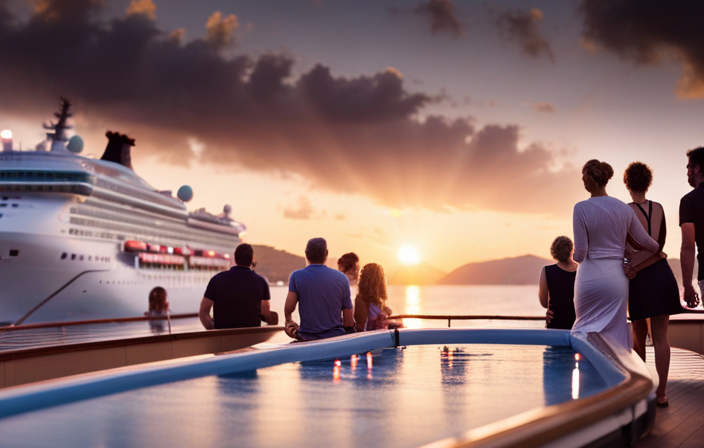
 Cruise Lines3 months ago
Cruise Lines3 months agoWhat Is The Average Age Of Passengers By Cruise Line
-
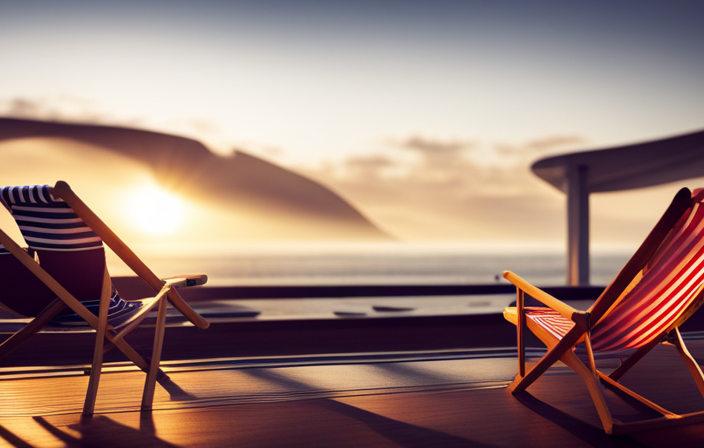
 Onboard Experience1 week ago
Onboard Experience1 week agoFinding Deals On Unsold Cruise Cabins: Tips And Strategies
-
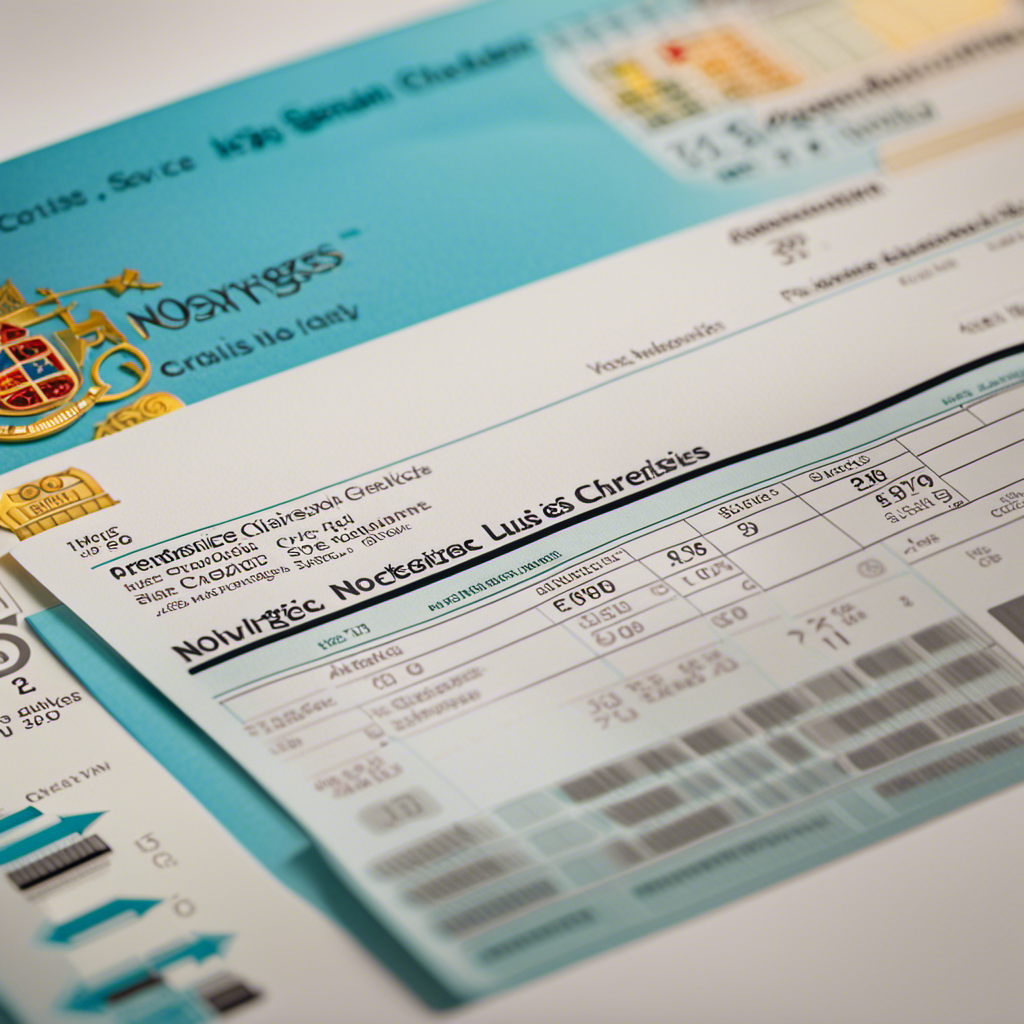
 Cruise Lines3 months ago
Cruise Lines3 months agoDecoding Norwegian Cruise Line’s Gratuities and Service Charges
-
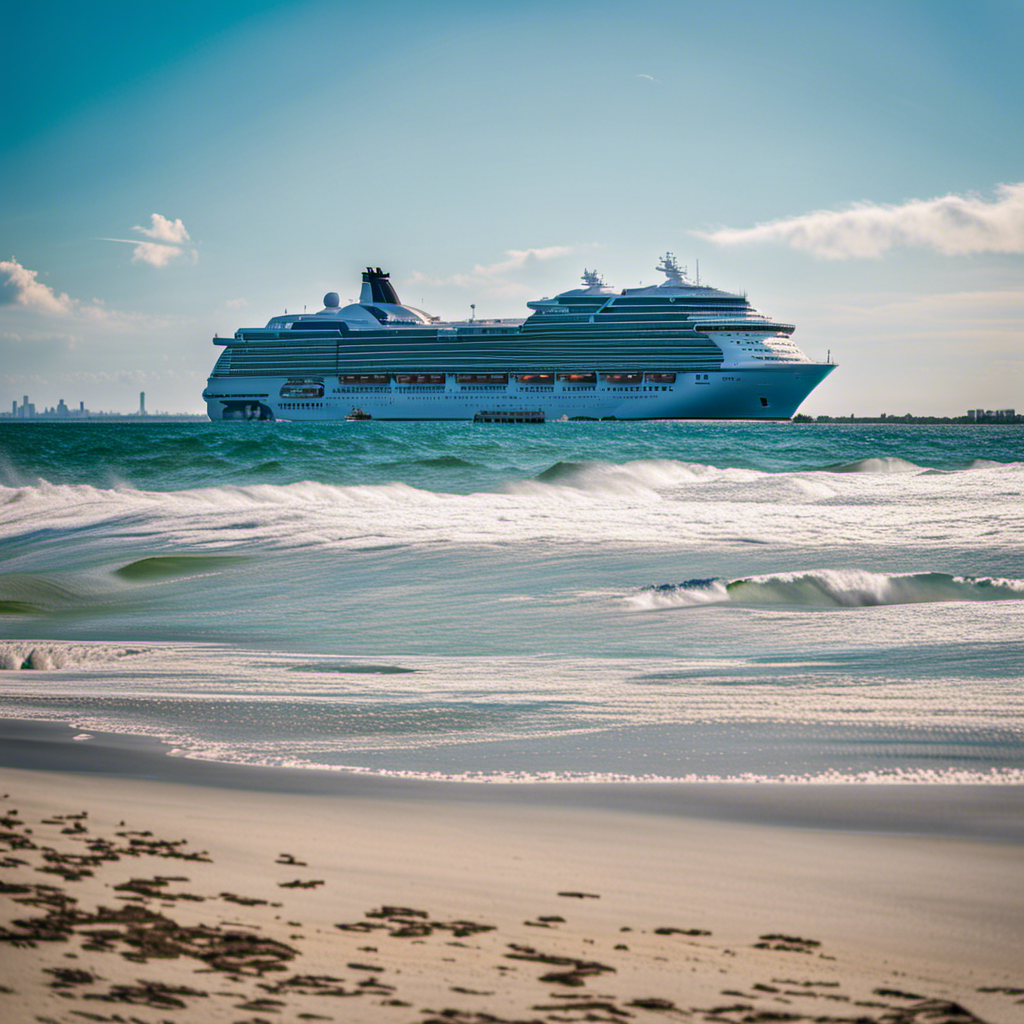
 Cruise Lines3 months ago
Cruise Lines3 months agoWhat Cruise Lines Depart From North Carolina








